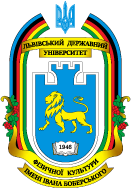EFFECTIVENESS OF THE IMPACT OF THE ERGOGENIC PROGRAM ON THE INDICATORS OF FUNCTIONAL AND PSYCHO-EMOTIONAL STATE OF SERVICEMEN (CONTUSIONS RECEIVED DURING THE RUSSIAN-UKRAINIAN WAR)
DOI:
https://doi.org/10.32782/2221-1217-2025-1-05Keywords:
physical fitness, functional state, concussion, program, military professional activity, military personnel, russian-Ukrainian warAbstract
The activities of military personnel in the current conditions and the conduct of hostilities on the territory of our state are full of numerous risk factors in the performance of assigned tasks, which can cause numerous injuries, wounds, contusions, and the consequences of health deterioration, which in turn affects the effectiveness of the combat mission and the combat capability of the structural unit. The consequences of the resistance against the aggressor by the Russian Federation have led to the emergence of a significant number of servicemen participating in the hostilities with health problems, namely, brain contusion. The study of the functional and psycho-emotional state of servicemen who sustained concussion shows a decrease in their reaction time, an imbalance in the processes of perception and processing of information, which is an illustration of nervous system disorders resulting from injuries, dysfunction of the central nervous system, fatigue, nervousness, etc. Given the circumstances, the behavior of servicemen and the limited abilities resulting from contusions during combat, there is a need to address important issues of finding the latest measures, programs and technologies for recovery, rehabilitation and return to the social environment after returning from the combat environment. All of these measures should be comprehensive, as it has been established that servicemen who have suffered from shell shock have health disorders at the level of pre-concussion state, characterized by deterioration in the regulation of basic body processes, functional and psycho-emotional state, which occurs in the form of nervous system disorders. However, this problem has not yet been finally solved, which has led to the relevance of the chosen area of research. It is a high level of functional capabilities, a stable psycho-emotional state, and a sufficient level of physical fitness that allows them to successfully perform their professional duties and is an important criterion for sufficient combat capability.
References
1. Галаманжук Л.Л., Єдинак Г.А. Основи наукових досліджень: навч.-метод. посібник. Кам’янець-Подільський : Рута, 2019. 154 с.
2. Засоби фізичного виховання – напрям відновлення боєготовності військовослужбовців після контузії головного мозку / С. Кунинець та ін. Український журнал медицини, біології, спорту. 2019. № 4(3). С. 13–19.
3. Матвейко О. Засоби відновлення військовослужбовців після контузії головного мозку. Молода спортивна наука України : матеріали ХХІІІ науково-практичної конференції. Львів, 2019. Т. 2. С. 46–47.
4. Матвейко О. Застосування засобів фізичної підготовки для прискорення реабілітації військовослужбовців після отримання травм. Молодіжний науковий вісник. 2017. № 27. С. 161–166.
5. Матвейко О. Фізична підготовка військовослужбовців, які мали контузію головного мозку на етапах професійно-бойової діяльності. Молода спортивна наука України : матеріали ХХVІ науково-практичної конференції. Львів, 2020. Т. 2. С. 53–54.
6. Особливості способу життя військовослужбовців, які мали контузію, як чинник, що впливає на бойову готовність / А. Одеров та ін. В: Волинський національний університет імені Л. Українки. Фізичне виховання, спорт і культура здоров’я у сучасному суспільстві. Зб. наук. пр. Луцьк, 2022 № 2(58). С. 67–78. https://doi.org/10.29038/2220-7481-2022-02-67-78 DOI: https://doi.org/10.29038/2220-7481-2022-02-67-78
7. Теоретичні підходи до проблеми інтеграції військовослужбовців з обмеженими можливостями здоров’я в суспільство / А. Одеров та ін. Науковий часопис Українського державного університету імені М.П. Драгоманова. Серія 15, Науково-педагогічні проблеми фізичної культури (фізична культура і спорт). Зб. наук. пр. Київ, 2024. № 10(183)24. С. 153–156.
8. Вплив контузій та їх наслідків на функціональний стан військовослужбовців / А. Одеров та ін. Науковий журнал Львівського державного університету фізичної культури імені Івана Боберського. Фізична активність, здоров’я і спорту. Зб. наук. пр. Львів, 2024. № 2(36). С. 22–31. https://doi.org/10.32782/2221-1217-2024-2-04 DOI: https://doi.org/10.32782/2221-1217-2024-2-04
9. Аналіз показників психологічних якостей військовослужбовців під впливом чинників військово-професійної діяльності / Первачук та ін. Науковий часопис Національного педагогічного університету імені М.П.Драгоманова. 2023. № 6(166)23. С. 113–117. http://dx.doi.org/10.31392/NPU-nc.series15.2023.6(166).24 DOI: https://doi.org/10.31392/NPU-nc.series15.2023.6(166).24
10. Подрігало Л.В., Даниленко Г.М., Пашкевич С.А. Організація моніторингу здоров’я дітей як складова частина державного соціально-гігієнічного моніторингу. Харків, 2007. C. 24.
11. Романчук С.В., Вплив авторської програми ергогенної спрямованості на показники фізичної підготовленості військовослужбовців. Науковий журнал Львівського державного університету фізичної культури імені Івана Боберського. Фізична активність, здоров’я і спорту. Зб. наук. пр. Львів, 2024. № 1(35). С. 11–19. https://doi.org/10.32782/2221-1217-2024-1-02 DOI: https://doi.org/10.32782/2221-1217-2024-1-02
12. Сінайко В.М., Гавенко В.Л., Соколова І.М. Спосіб оцінки тривоги, роботоспроможності, активності, настрою та самопочуття. Рац. пропозиція ХДМУ. 18.02.2002. № 197(1).
13. Шиян Б.М., Єдинак Г.А., Петришин Ю.В. Наукові дослідження у фізичному виховання та спорті : навч. посіб. Кам’янець-Подільський : Рута, 2012. 280 с.
14. Ягупов В.В. Методи дослідження у фізичному вихованні та спорті : навчальний посібник. Житомир : «Євро-Волинь», 2024. 556 с.
15. Berryman J. The Colour Treatment: A Convergence of Art and Medicine at the Red Cross Russell Lea Nerve Home. Health and history. 2016. No. 18(1). рр. 5–21. DOI: https://doi.org/10.1353/hah.2016.0010
16. Drijkoningen D., Caeyenberghs K., Leunissen I. еt аl. Training-induced improvements in postural control are accompanied by alterations in cerebellar white matter in brain injured patients. Neuroimage Clin. 2015. № 7. рр. 240–251. https://doi.org/10.1016/j.nicl.2014.12.006. DOI: https://doi.org/10.1016/j.nicl.2014.12.006
17. Funch O., Hasselstrom H., Gunnarsson T. Validation and Practical Applications of Performance in a 6-Min Rowing Test in the Danish Armed Forces. International Journal of Environmental Research and Public Health. 2021. No.18(4). рр. 1395. https://doi.org/10.3390/ijerph18041395. DOI: https://doi.org/10.3390/ijerph18041395
18. Oderov A., Yuriev S., Babych M., Abramenko O. еt.аl. Dynamics of functional state of artillery reconnaissance cadets during training and combat activities. Journal of Physical Education and Sport, 2024. Vol. 24 (7), Art 184, pp. 1636-1646. https://doi.org/10.7752/jpes.2024.07184. DOI: https://doi.org/10.7752/jpes.2024.07184
19. Peters D. M., Jain S., Liuzzo D. M., Middleton A. еt. аl. Individuals with chronic traumatic brain injury improve walking speed and mobility with intensive mobility training. Archives of Physical Medicine and Rehabilitation. 2014. No. 95(8). рр. 1454–1460. https://doi.org/10.1016/j.apmr.2014.04.006. DOI: https://doi.org/10.1016/j.apmr.2014.04.006
20. Romanchuk S., Nebozhuk O., Ripak M., Lashta V., Klymovych V., Тymochko O. A. еt. аl. Research on Functional State of Nervous System of Servicemen with Post-Concussion Syndrome with Using Screening Tests. Волинський національний ун-т ім. Лесі Українки. Луцьк, 2022, № 3(59). С. 69–76. https://doi.org/10.29038/2220-7481-2022-03-69-76. DOI: https://doi.org/10.29038/2220-7481-2022-03-69-76
21. Straudi S., Severini G., Charabati A. S. еt.аl. The effects of video game therapy on balance and attention in chronic ambulatory traumatic brain injury: an exploratory study. BMC Neurol. 2017. No. 17. р. 86. https://doi.org/10.1186/s12883-017-0871-9 DOI: https://doi.org/10.1186/s12883-017-0871-9






